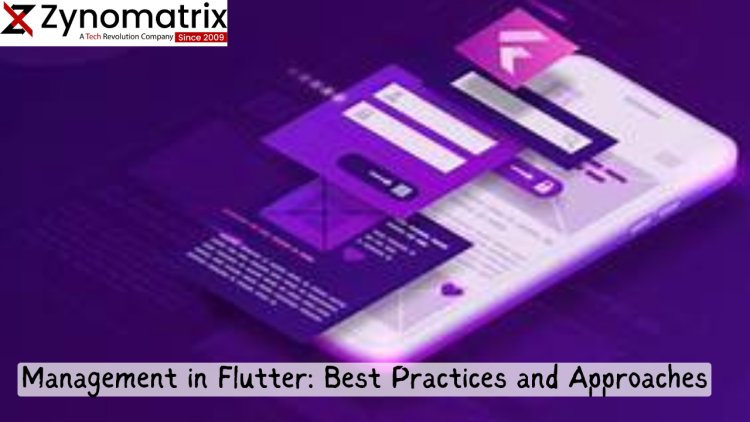State Management in Flutter: Best Practices and Approaches
This blog post aims to delve into the intricacies of state management within Flutter applications. It covers a spectrum of state management techniques, including StatefulWidget, Provider, Bloc, Riverpod, getX, and more. Each approach is dissected, explaining its concepts, advantages, and best use cases through practical examples and code snippets. By understanding these state management techniques, developers can enhance their Flutter applications' performance, maintainability, and scalability.

Introduction: State management stands as a pivotal aspect of building robust and responsive applications in Flutter. Flutter's flexibility offers various approaches to handle and manage application state effectively. This blog serves as a comprehensive guide, exploring the best practices and diverse approaches to state management in Flutter, empowering developers to make informed decisions and streamline their app development process.
State management lies at the core of Flutter app development, influencing an application's responsiveness and performance. In this comprehensive guide, we'll navigate through various state management approaches available in Flutter, shedding light on their nuances, strengths, and the scenarios where they shine.
Starting with the fundamental StatefulWidget, which is inherent to Flutter, we'll explore its role in managing mutable state within widgets. This serves as a foundation to comprehend more advanced state management solutions and their comparative benefits.
Moving forward, we'll dive into the Provider package, a popular solution in the Flutter ecosystem that offers a simple yet powerful way to handle state. We'll discuss its implementation and how it facilitates efficient state propagation across the widget tree.
Our journey continues with Bloc (Business Logic Component) pattern, which advocates for separation of concerns and reactive programming. We'll delve into its architecture and how it streamlines complex state management in Flutter applications.
Additionally, we'll explore other notable state management solutions like Riverpod and getX, understanding their unique features, advantages, and where they fit best in Flutter projects. By comprehending these diverse approaches, developers can make informed decisions on selecting the most suitable state management technique for their applications.
By the end of this guide, readers will have gained a comprehensive understanding of various state management approaches in Flutter, empowering them to make informed decisions and adopt best practices to build responsive, maintainable, and scalable applications.
What's Your Reaction?





















